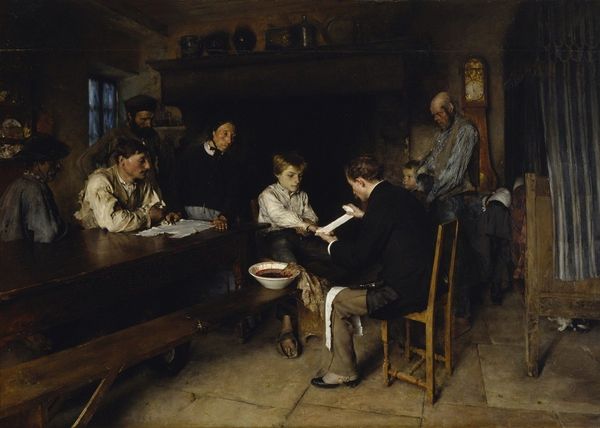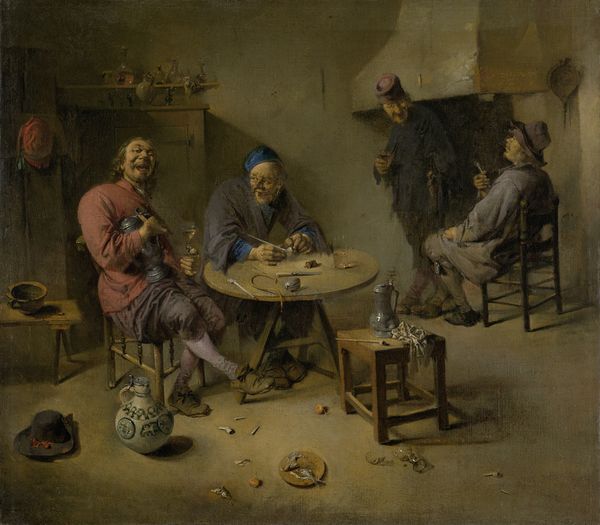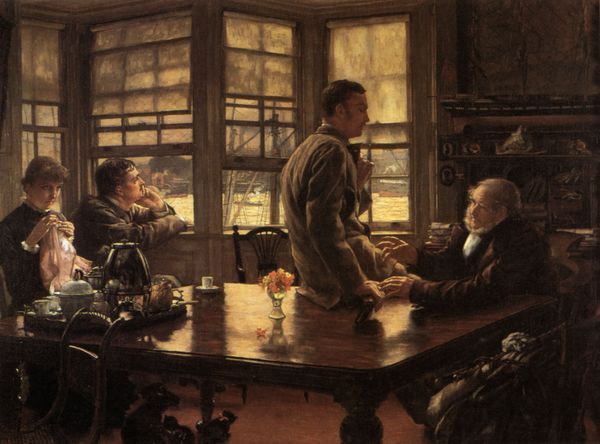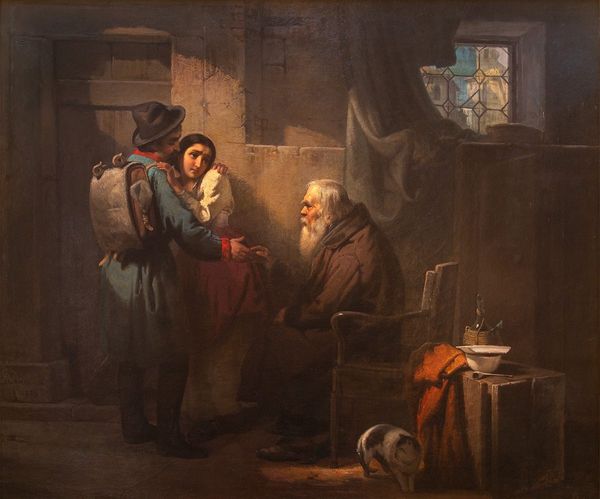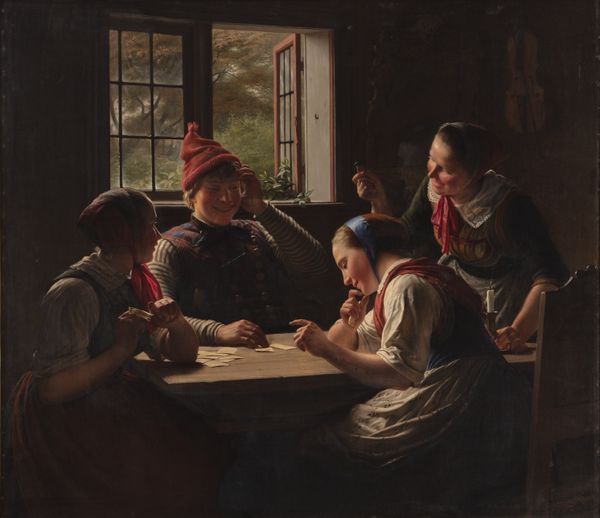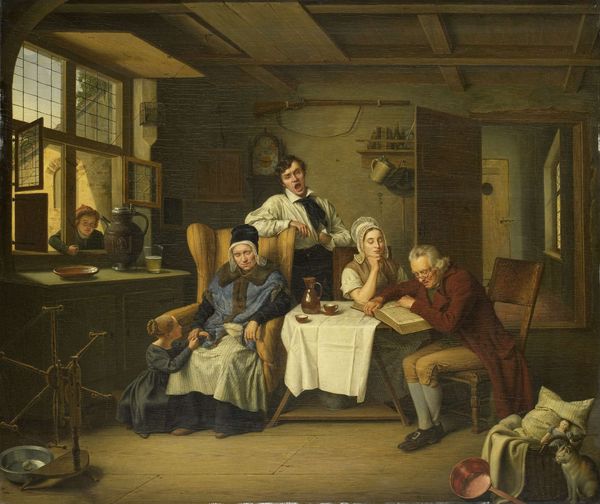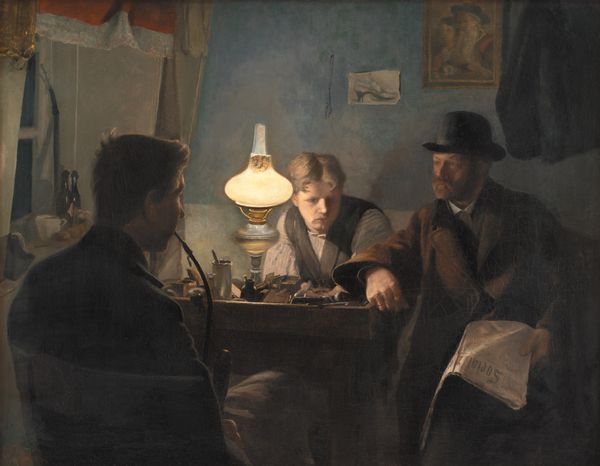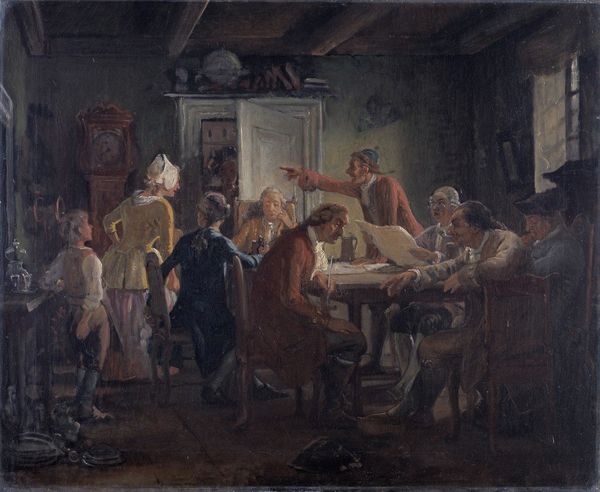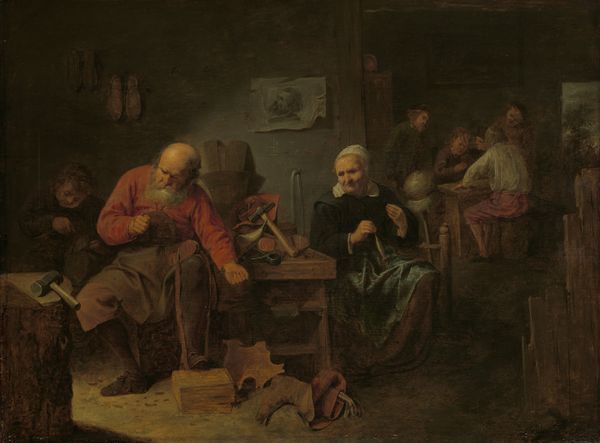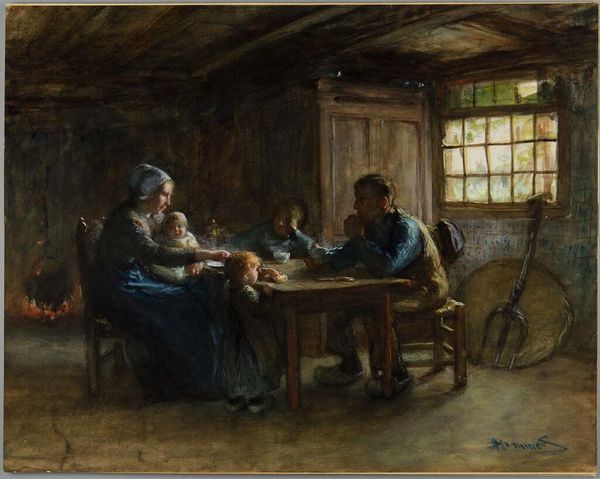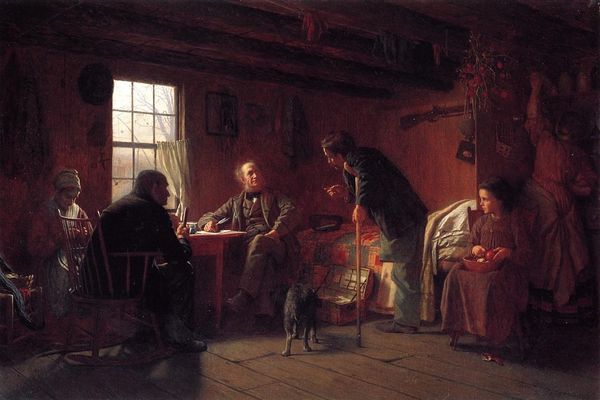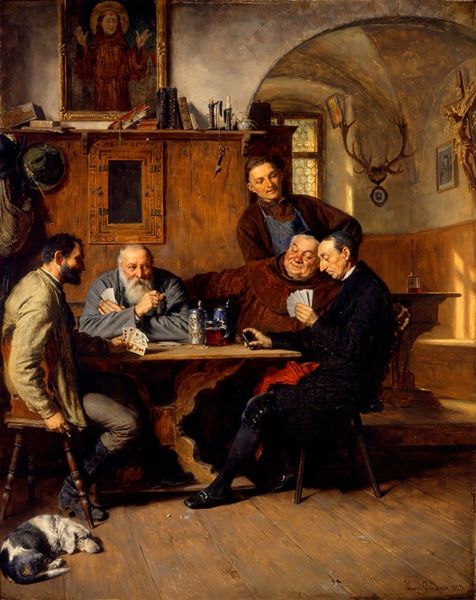
Dimensions: support: 413 x 521 mm frame: 651 x 755 x 70 mm
Copyright: CC-BY-NC-ND 4.0 DEED, Photo: Tate
Editor: Here we have *A Letter from the Colonies* by Thomas Webster. The expressions of the figures gathered around the table are quite captivating. What can you tell me about the painting's broader context? Curator: Well, the painting reflects a period when letters were a vital link to loved ones abroad. Webster captures the communal aspect of receiving news, the way it was shared and felt by the entire family unit. Editor: It’s interesting to think about how the colonies shaped the social fabric of England at the time. Curator: Indeed. Webster’s work serves as a window into understanding the era's social dynamics and the pervasive impact of colonial endeavors on domestic life. Editor: Thank you. I see how Webster's painting connects us to the past. Curator: My pleasure. It reveals much about the period's social history, if you look close.
Comments
tate 6 months ago
⋮
http://www.tate.org.uk/art/artworks/webster-a-letter-from-the-colonies-t00046
Join the conversation
Join millions of artists and users on Artera today and experience the ultimate creative platform.
tate 6 months ago
⋮
Webster's popularity during his lifetime rested upon his pictures of scenes from contemporary cottage and ale-house life. His view of rustic life was more refined than that of the seventeenth-century Dutch masters who inspired him. However, he frequently set his figures in interiors where the main source of light is an open window. This is a device often found in Dutch genre pictures. The theme of this picture was inspired by the great emigration boom of the late 1840s and early 1850s. A family studies the envelope of a letter from a friend or relation who has emigrated. They are clearly worried about what the letter might contain. Gallery label, August 2004
